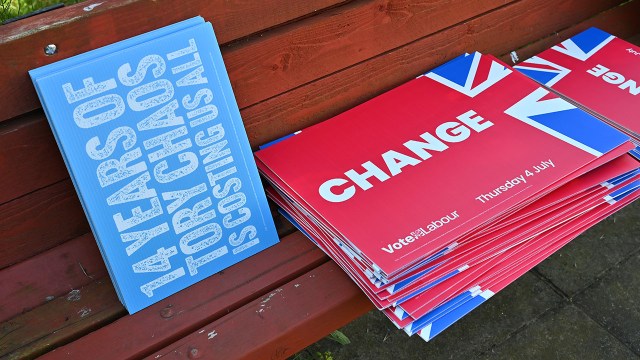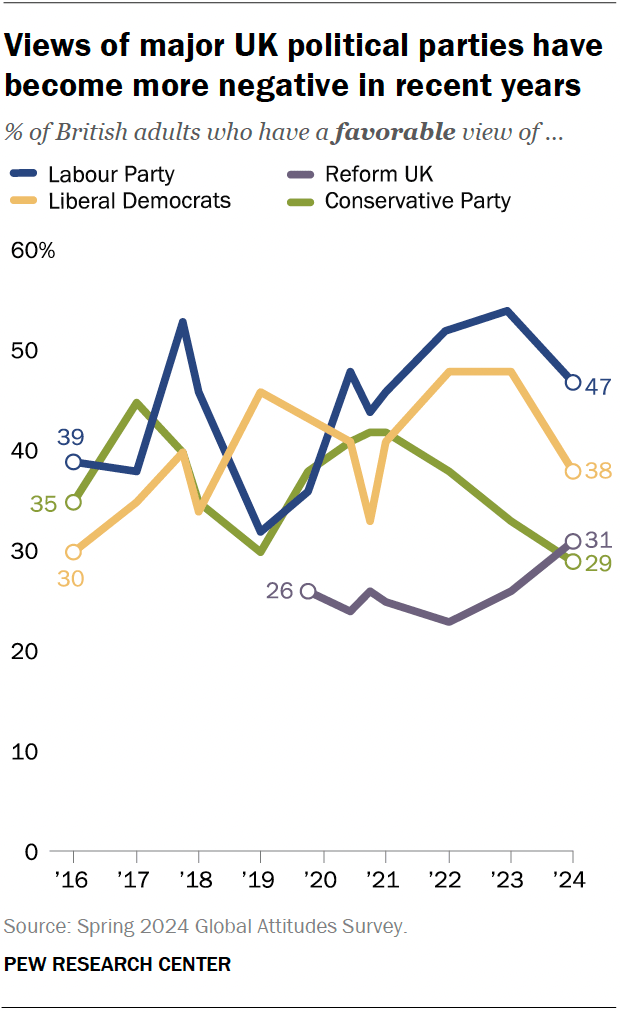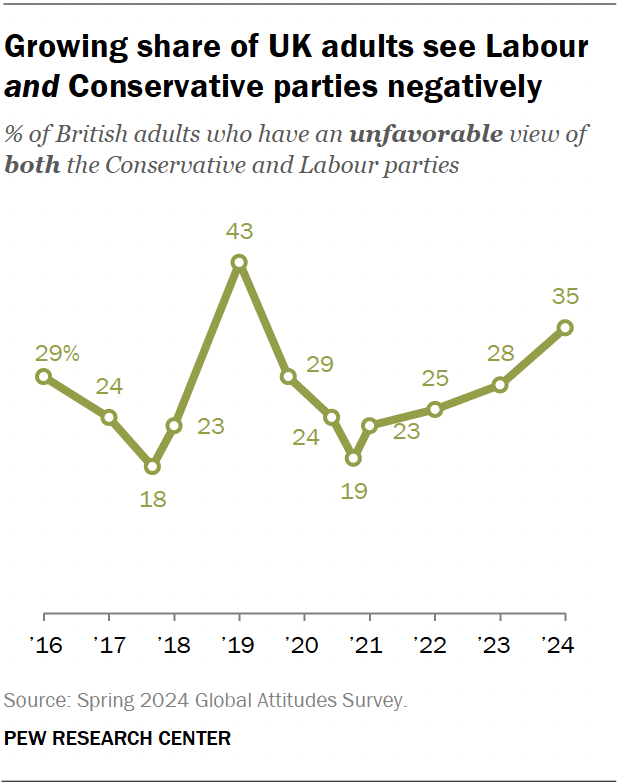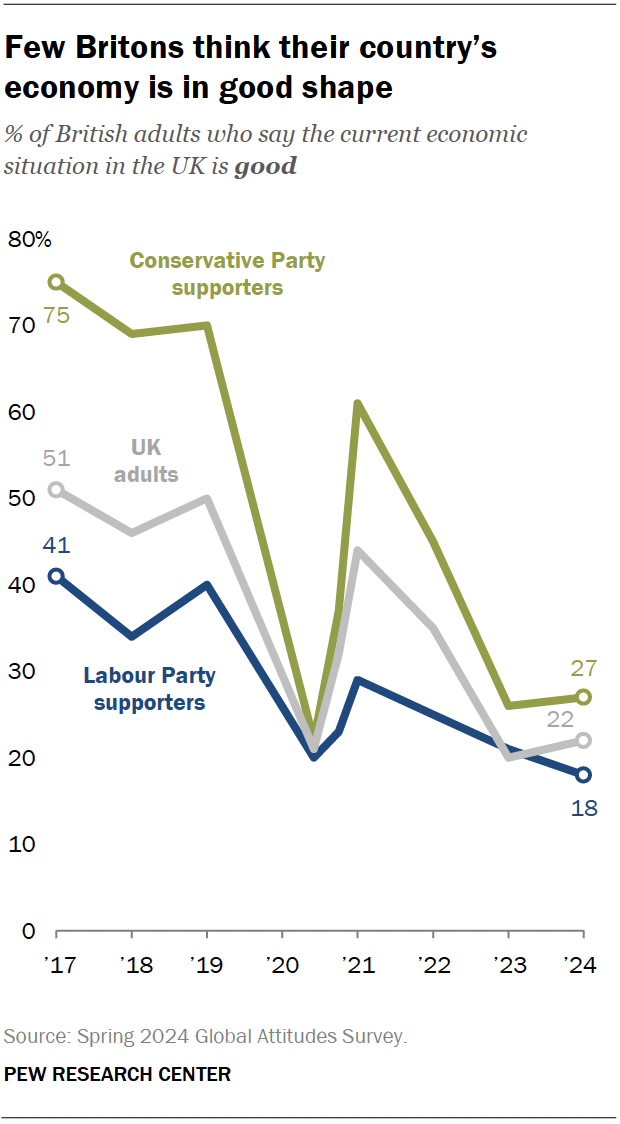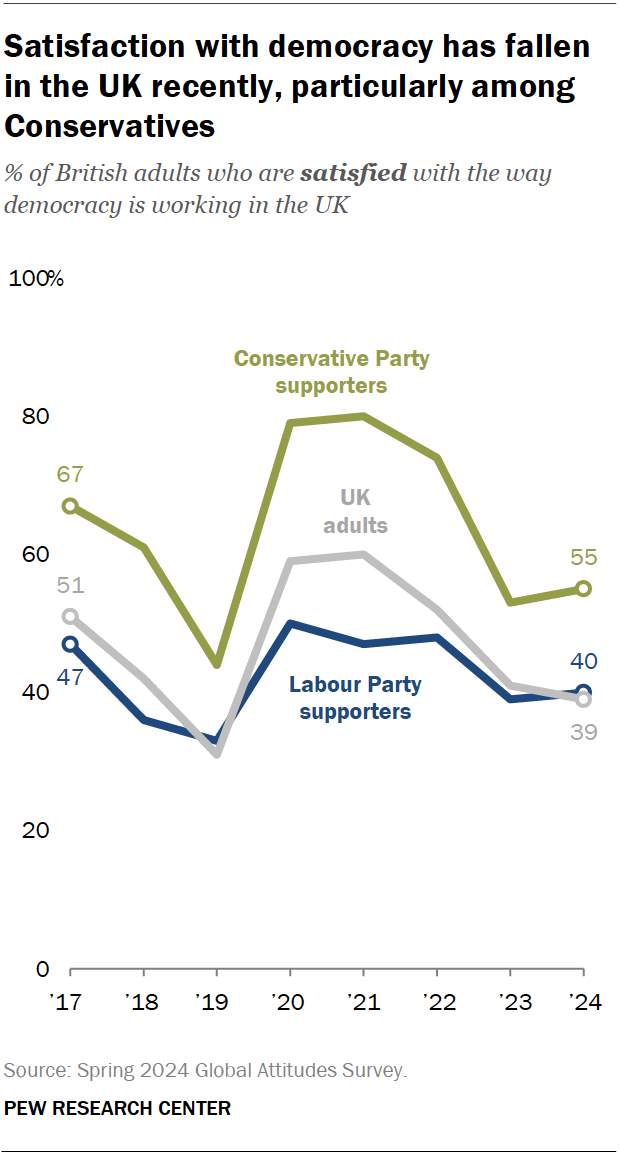Summary
- Donald Trump remains erratic and inconsistent when it comes to foreign policy. But the broader Republican foreign policy ecosystem forming around his administration is increasingly clear and organised.
- This ecosystem comprises three main “tribes” – restrainers who want US foreign policy to focus on America; prioritisers who want it to focus on Asia; and primacists who want it to continue to focus globally.
- We used ideas that come from all three tribes, and the Trump campaign itself, to imagine six scary scenarios for US foreign policy and their implications for Europe.
- These scenarios imagine futures for Ukraine, the South China Sea, strategic industrial policy, NATO, the Middle East, and an illiberal internationale. None of the scenarios is inevitable, but they are all derived from Republican ideas and are at least plausible
- Europeans are not prepared for these scenarios and, given their current divides over the US and the appropriate response to Trump, will struggle to respond to them collectively.
- What they can do is to prepare some contingencies for what might happen and understand how personnel choices and intra-Republican debates could shape the foreign policy of another Trump presidency.
Imagining the Trump presidency
These are difficult times. The Russian threat has returned to Europe while a brutal war rages in the Middle East. Populism is sweeping across the European continent, China seems increasingly scary, and nobody can stop looking at their phones. But in this maelstrom of woes, one prospect frightens European policymakers more than anything else: the return of Donald Trump to the US presidency.
The prospect is certainly real. As of May 2024, Trump leads in the polls nationally and in five out of the six key swing states. And so is the European trauma. Europeans are still licking their wounds from Trump’s first term: they have not forgotten the former president’s tariffs, his deep antagonism towards the European Union and Germany, or the US withdrawal from the Paris climate accords and the Iran nuclear deal. Nor have they recovered from Trump’s general boorishness at international summits, not to mention his regular threats to withdraw from NATO.
Beyond these flashbacks, Europeans are predominantly worried about the security implications of a second Trump presidency. Trump’s renewed threat to withdraw from NATO, his encouragement of Russian attacks on “delinquent” NATO members, and his claim that he could resolve the war in Ukraine in 24 hours take on even more resonance against the backdrop of Russia’s aggression. The fact that the nations of Europe cannot defend themselves without resorting to NATO and the help of the United States has never been more obvious; and yet, it has never been less certain that the US commitment to European security will remain firm.
But if Trump is elected, the implications for Europe will go well beyond the issues of Ukraine and European security. The Trump administration will challenge European policymakers across a range of issues: from China to trade, climate to the Middle East. Worse, another nightmare lurks beneath the potential foreign policy shocks: an international coalition that could emerge as a framework for populists in Europe to establish special ties with Trump’s Washington. Trump’s re-election might well embolden the populist right in Europe to obstruct common EU policies and initiatives more forcefully. They may also seek US endorsement for far-right parties in national elections, including in Germany and Poland in 2025.
Of course, the American people might still re-elect Joe Biden, but it seems only prudent to think about what will happen if they don’t. To guide Europeans in this task, we have developed six imagined foreign policy scenarios that could take place in the first year or so of a second Trump term. The scenarios build on Trump’s own statements and those of his campaign, numerous private conversations and workshops we have held with Republican thinkers, as well as policy ideas emanating from Republican think-tanks. As a tribute to the AI-enhanced fever dream that may lie ahead, we have created images using ChatGPT to illustrate each scenario. This would not have been possible just a couple of years ago, and serves as a signpost of our AI-powered future.
The broader ecosystem of Republican thought will matter a great deal for a new Trump administration’s foreign policy. Trump controls the Republican party. He dominates the party’s politics, drives its public narrative, and determines the range of acceptable opinion. But Trump remains as inconsistent and incoherent as ChatGPT on many if not most foreign policy issues.
Within the broad limits that Trump sets, personnel will be policy, which is to say that the people he appoints to key positions will have an enormous impact on the administration’s foreign policy. But no one, probably including Trump himself, knows who those people will be. In this report, we take a guess at his main foreign policy picks, but these are highly speculative. An understanding of broader Republican thought will serve a more useful role in predicting Trump’s foreign policy than the usual parlour game of guessing who the next national security advisor or secretary of state will be.
Three main Republican foreign policy camps or “tribes” currently vie for influence: the “primacists”, the “prioritisers”, and the “restrainers”. The dominant segment in the Congressional caucus and among the Washington establishment are the traditional primacists. They support continued US global leadership and a large US military footprint around the world. The restrainers, who want a radical reduction in the US security role abroad, arguably have the support of the Republican base. The prioritisers enjoy less support among voters. But their calls for US foreign policy to focus tightly on Asia and China are having an increasingly outsized influence in foreign policy circles.
Trump himself has moved erratically between all three camps in the nine years since he began running for president. In his campaign for the 2024 election, he has publicly distanced himself from the primacist camp, branding them “globalists” and “warmongers”. But all three camps will have influence in his administration and they will remain in ideological competition with each other. They are all focused on forming a coherent foreign policy narrative that will appeal to Trump’s instincts and interests – a sort of “battle for Trump’s mind”. They are all seeking to install (or to be) the political appointees that will drive Trump’s second-term foreign policy agenda.
The six scenarios reflect our understanding of the balance of power between the three tribes on the given issue as well as Trump’s occasionally consistent positions. They are, in our humble opinion, eminently plausible. However, these scenarios are also very far from inevitable and solely designed to stimulate thought. Rather than making predictions, they simply point out what could plausibly go wrong. Our hope is that the possibilities will encourage Europeans to consider how they can approach the very difficult trade-offs that may lie ahead. Maybe they can even get people to stop looking at their phones so much.
Ukraine: Minsk 3.0

Donald Trump seems to hate Ukraine almost as much as he admires Vladimir Putin. He blames the country for his first impeachment, his election defeat in 2020, and for “covering up” Biden’s supposed crooked dealings in Ukraine. Trump’s restrainer instincts are particularly strong on the Ukraine war: he wants out. He has promised to “end the war in 24 hours”, claiming he could get both sides to make a deal. No one knows what such a deal would entail, although the past offers some clues, particularly Trump’s first-term outreach to North Korea. The president would likely expect Europeans to fall in line with his “historic peace deal” or start dealing with the war by themselves.
On the first full day of Trump’s second term in office, the president announced his intention to make a deal to end the war in Ukraine. “That war has to be stopped,” he noted, as he had during the campaign. “It is a disaster that wastes our money. Ukraine is not America’s responsibility, and we have other problems. Biden’s Russia policy only helped China, North Korea, and Iran.” Ten days later, after the president’s first phone call with President Vladimir Putin, Trump told the press that “Putin was very firm that he wants to do this. I think he might want to do this even more than me.”
As usual, Trump said very little about how he intended to achieve his goals. His freshly installed cabinet seemed divided on the question. Various sources leaked to the press that US intelligence was reporting very few substantial differences between Russia, China, North Korea, and Iran on Ukraine. Secretary of state Robert O’Brien seemed wary of pushing a deal, but quickly embarked on a trip to Ukraine and major European capitals to hold consultations on the process.
In those meetings, O’Brien emphasised that the US and its allies had always said that the war should end in negotiations, so now was the time to start. He hinted strongly that at the core of the US approach to the deal was de facto acceptance of Russian control of the occupied parts of Ukraine. NATO membership for Ukraine would be off the table, at least for the time being. And Europeans had to be on board with the broad contours of a summit, otherwise the US would need to reconsider its role in European security.
O’Brien also confessed that the Trump administration had not yet fully thought through all the aspects of a settlement and Ukraine’s future. These included the possibility of a peacekeeping or monitoring force, Ukraine’s accession to the EU, the country’s bilateral security arrangements with the West, and an economic development and reconstruction plan for Ukraine. Also largely unexamined were the disposition of Russian sovereign assets and the question of sanctions relief.
At the beginning of March 2025, the Trump administration submitted a new budget to Congress that included over $30 billion in aid to Ukraine. Trump used the press conference announcing the budget to state his intention to bring together Ukraine’s president Volodymyr Zelensky and Putin for a meeting to resolve the conflict. “This aid only goes to Ukraine if Zelensky helps me to end this war. But if Russia opposes this beautiful idea, there can be a lot more aid to Ukraine.” His speech was accompanied by a slick video portraying him, Putin, and Zelensky as peacemakers.
A week later, letters went out to Putin and Zelensky proposing a trilateral summit in Riyadh, Saudi Arabia in May – without preconditions. The US Department of State invited European leaders to declare their support for the process and announce what they were ready to do for it to succeed.
The Russian response was muted. In a press conference, Kremlin spokesman Dmitri Peskov noted that Russia had always been willing to negotiate and could consider the meeting if it met Russia’s core security interests. At a minimum, this would involve Ukraine recognising Russia’s new “constitutional territories” – Crimea, Donetsk, Luhansk, Kherson, and Zaporizhzhia. Zelensky stated he would only consider the summit if Russia recognised Ukrainian sovereignty over its internationally recognised territory and began to withdraw its forces. The White House spokesperson responded that Trump would meet with whomever showed up.
Meanwhile, the Ukrainian government communicated to various European leaders that Trump was pressing Zelensky to give up sovereignty over the regions Russia had illegally annexed, or else risk losing US aid. In an ensuing phone call between Washington and Berlin, Trump’s new national security advisor Richard Grenell threatened the withdrawal of US troops from Europe if Germany objected the plan. He also made clear that the US expected Germany and the EU to take full responsibility for financing Ukraine’s reconstruction and providing security guarantees. The US might consider assisting with loans, but under the precondition that European contracts remained open for US companies.
As the negotiations over these negotiations continued, backchannel envoys from the Kremlin arrived in Paris and Berlin. The envoys indicated Putin’s openness to a summit. They hinted that the “official performing the duties of the CIA director”, Kash Patel, had told them Trump would demand an end to Russia’s military modernisation efforts with Iran as the price of the deal, but that this would be accompanied by economic incentives. The envoys also expressed reservations about whether Trump could get his NATO allies or even the US Congress to go along with the deal. They wanted to understand European attitudes towards the idea and towards sanctions relief in the event a negotiation began.
China: Crisis in the South China Sea
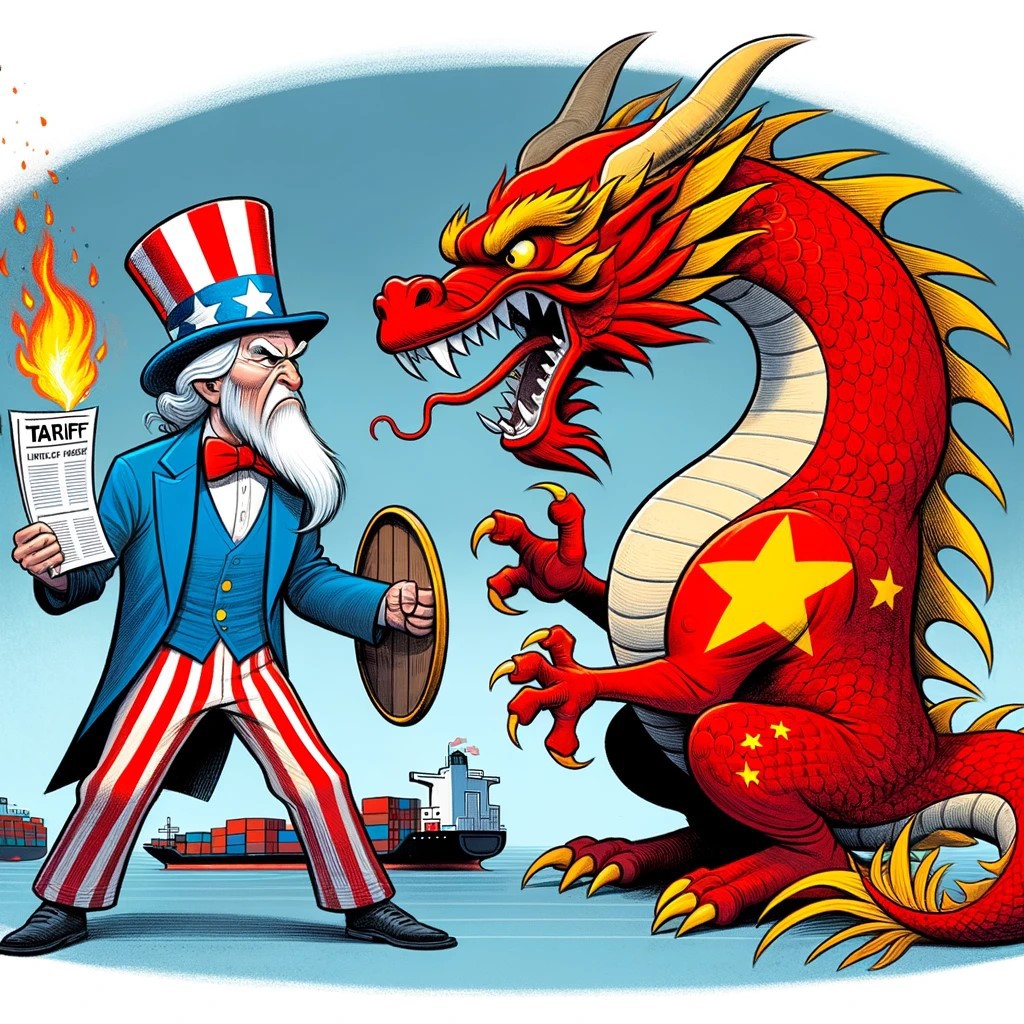
A core consensus on China has emerged within the Republican Party. All three Republican camps view China as the greatest challenge to US national security interests, and all are focused on prevailing in the technological competition with China. The restrainers, often including Trump, emphasise the economic challenge China presents and particularly the US trade deficit with China. But pressures within the Republican party and in Congress, as well as the available personnel, mean that the next Trump administration’s China policy will probably be set by prioritisers – who see an urgent need to shift military resources from Europe to the Indo-Pacific. Faced with a crisis, Trump and the prioritisers would likely accelerate this shift in resources but would also probably escalate on the trade front, leaving Europe stuck between a rock and a hard place.
Just days after Trump’s inauguration in January 2025, the president faced his first foreign policy crisis in the Indo-Pacific. A vessel of the Chinese navy rammed a Philippine naval ship trying to run the Chinese blockade of the disputed “Second Thomas Shoal” in the South China Sea. Eighty-five Filipino sailors drowned with the Chinese making little effort to rescue them. The Chinese promptly tightened the blockade and declared that any further efforts to run it would occasion more sinkings. This put the Trump administration under pressure to uphold its obligations under the US-Philippines Mutual Defense Treaty and to support a key ally.
But Trump was not keen to engage militarily in China’s backyard: “Why go to war over a rock?” he moaned to his national security advisor, Richard Grenell. But the president did not want to appear bullied by China either – showing strength is crucial for Trump. A split emerged in his cabinet. One side argued that if the US sent forces south to help the Philippines, it would open up serious vulnerabilities around Taiwan. The rest insisted that breaking US defence treaty obligations with allies in the Indo-Pacific would encourage China to continue testing red lines in Taiwan. From an operational point of view, this faction warned that a lack of response from Washington may endanger US access to strategic military bases in the Philippines, which would be critical for Taiwan contingency planning.
As pressure grew from Congress, Trump decided that he must stand up to Beijing and show strength. He posted on Truth X – the new social network born out of the merger between X and Truth Social – “In 2012, Obama showed weakness trying to solve this with his ‘diplomacy’ and ‘international law’. But China doesn’t care about international law, it only cares about STRENGTH and FORCE!”
Trump ratcheted up the rhetoric and announced that he would draw a red line in the South China Sea, though he didn’t say exactly what that meant. The administration put US forces on high alert. It dispatched additional units of the US Pacific Fleet to the South China Sea to conduct joint patrols with ships from Australia, Japan, and the Philippines. The US also increased air patrols over Second Thomas Shoal using F-35 fighters operating from its aircraft carriers. Finally, Washington announced accelerated delivery of military equipment to Manila. Trump, meanwhile, opened a channel to negotiate with Beijing, holding a two-hour phone call with Chinese leader Xi Jinping and announcing a face-to-face meeting in February.
As the risk of military confrontation between the US and China increased, shipping routes were disrupted, investors panicked, and world markets plunged.
After returning from a hastily arranged trip to Tokyo and Canberra, Grenell called his counterparts in the EU, France, Germany, Italy, and Poland. He demanded that European leaders take a clear position, join the US in condemning Chinese aggression, and press for a prompt withdrawal of all China’s navy from Philippine territorial waters. He reminded EU member states that China had violated Philippine sovereignty and a 2016 international arbitration court ruling that had dismissed its claims to much of the South China Sea.
A couple of days earlier, Congress had adopted a package of punitive sanctions to be imposed on China unless it stopped its attacks and left Philippine waters. The legislation foresaw the US severing large portions of its business transactions with China. Trump announced that the sanctions may also cover Chinese-owned companies that operated in Indonesia, Mexico, Thailand, and Vietnam. Over several meetings and phone calls, US officials demanded that Europeans publicly declare that they would join the sanctions. China announced that it would retaliate by selectively shutting off supplies of rare earths to European countries that complied with the US sanctions.
But Trump also realised that the crisis in the South China Sea presented an opportunity to introduce the type of tougher economic warfare against China that he had long planned. He instructed the administration to start implementing a package of economic measures on China he had announced during his electoral campaign. The aim was to reduce the US trade deficit with China and “bring jobs back” to America. As he posted on Truth X, “America’s workers are losing jobs because China is pulling off the greatest theft in the history of the world. So UNFAIR! And it funds their aggression against the Philippines. Tomorrow I will announce a plan to get a FAIR deal for American workers. TAX CHINA TO BUILD AMERICA!”
The next day, US trade representative Katie Britt announced that, consistent with Trump’s campaign pledge, the US would impose a universal baseline tariff of 10 per cent on all imports (including imports from the EU). On top of that, Britt announced that the US would impose a 60 per cent tariff on most Chinese imports. The administration then introduced a four-year plan to phase out all imports of essential goods from China, from electronics to steel and pharmaceuticals. Trump followed this up with another social media post: “Weak Joe Biden let China dominate our pharmaceutical market. China produces 95% of all ibuprofen, 91% of hydrocortisone, 70% of all Tylenol, and nearly half of all penicillin. Can you imagine that? This ENDS TODAY!”
From Trump’s perspective, all these measures were the opening gambit for a negotiation to secure a better deal on trade with China. He was less concerned about the details of strategic industrial policy and its national security-related measures. But, to retain negotiating leverage with China, his administration kept the existing Biden-era export control measures in place and even pushed for further tightening of technology controls. This locked Trump into the Biden-era policy, meaning he was unable to offer China anything that even resembled a palatable deal. His agenda on China thus translated into a series of unilateral US measures to further decouple from China and limit its ability to prevail in technological competition with America.
In conversations with EU leaders, the Trump administration was unambiguous that Europe must take decisive action to match US technology and export controls. Europeans were also instructed to prevent intellectual property theft, forced technology transfers, and China’s purchase of key dual-use technologies. Furthermore, the EU – especially Germany – must finally address the issue of Chinese telecommunications giant Huawei’s presence in its critical infrastructure and secure European technology supply chains. The following areas emerged as “critical” to demonstrate alignment with the US: inbound and outbound investment screening, procurement restrictions, export controls, supply chain resilience policies, and cybersecurity measures.
Strategic industrial policy: Total energy dominance

Trump announced the United States’ withdrawal from the US from the Paris climate agreement in 2017, in an early demonstration of his hostility to climate action. His point of view was that this “very unfair” deal imposed “draconian financial and economic burdens” on the US while China and India gained an advantage. This time around, Trump has promised to slash regulations limiting the production of fossil fuels. All three Republican camps share Trump’s disdain for environmental measures, though each for their own reason: primacists see energy as a tool to promote global US leadership, prioritisers see it as a critical US advantage over China, and restrainers see it as the best route to greater US competitiveness and a manufacturing renaissance.
Trump’s first address to a joint session of Congress took place in March 2025 and introduced the idea of “total energy dominance”. It quickly became clear that energy dominance would be the main concept linking his administration’s effort to inspire an American economic and manufacturing renaissance with US foreign policy goals. The idea was to use cheap and abundant US energy resources to boost prosperity and ensure economic security at home, but also to help the United States’ allies and weaken its adversaries.
“TOTAL ENERGY DOMINANCE”, Trump posted on Truth X, “will make America great and respected again. OIL (ENERGY) is back!” His cabinet began messaging that total energy dominance would revive America’s industrial and manufacturing sector, take back the industries of the future from China, leave dangerous regimes like Russia in the dust, and make the US new friends in Africa, South America, and the Pacific.
In Trump’s view, this policy would only help the climate. “The climate needs total energy dominance,” Trump said in his speech, “because American energy is clean energy. Biden’s green obsession just empowered China.” US carbon emissions had been declining, the Department of Energy noted in support of the speech, through the use of “clean natural gas”. Biden’s policies of mandating the use of renewable energy and electric vehicles had not, in this telling, really reduced global carbon emissions. They had only shifted them to China, while simultaneously conceding America’s greatest economic and geopolitical advantage. The department emphasised that between 2005 and 2021, US carbon dioxide emissions fell by 1 billion metric tonnes while China’s grew by 5 billion metric tonnes. Freeing up the use of US natural gas, oil, clean coal, and nuclear power would enable energy dominance and reduce global carbon emissions.
Total energy dominance involved several aspects that were elaborated in subsequent speeches by secretary of commerce Marco Rubio, secretary of the treasury Robert Lighthizer, and environmental protection agency administrator Andrew Wheeler. As Rubio explained, the US would profit from energy dominance to build up its domestic industrial base and enrich the working class, not from fantasies like the “green transition”. This “means supporting critical industries such as mining, oil and gas, and metallurgy, all of which are vital to our security. It means tying generous government subsidies to performance requirements … and it means getting serious about deregulation and permitting reform … [so that] industrial policy can actually work.”
The administration first sought to “end the war on energy”, removing regulatory impediments to the production and sales of fossil fuels, nuclear power, and critical minerals. Through executive orders in April and May 2025, Trump reversed the Biden administration’s pause on the export of liquefied natural gas (LNG) and lifted its ban on exporting gas only to countries with which the US had free trade agreements. The Trump administration also ordered the resumption of sales of both off-shore and on-shore drilling leases. It also introduced a streamlined approval process for nuclear power plants, fossil fuel infrastructure, and export terminals and sought to repeal Biden-era taxes on natural gas.
As Wheeler explained in a congressional hearing in June 2025, “the Trump administration supports expanding both fossil fuel and renewable energy sources, but we want to let the market decide which combination of sources represents the optimal path to US energy dominance.” This meant that the administration intended to dismantle the numerous regulations put in place by the Biden administration to dictate the use of green energy sources, such as its mandate for how many electric vehicles car companies had to produce in relation to petrol vehicles. The administration would continue to support the research, development, and production of green technologies that could prove themselves in the marketplace. Finally, Wheeler set out how the Trump administration would also reduce the burden of environmental review for infrastructure projects and prevent liberal states from using these processes to slow down infrastructure construction and energy production.
In June 2025, Rubio gave a speech at the American Compass forum. He highlighted research from the think-tank that demonstrated how China uses cash injections, tax breaks, low-interest and forgivable loans, cheap land and energy, and other incentives to systematically favour Chinese industry – including in the energy sector and energy-intensive industries such as AI. China specifically offers support to coal-fired power plants in the form of direct funding, preferential loans, and power purchase guarantees. The EU, he noted, had similarly implemented massive fossil fuel subsidies after the Russian invasion of Ukraine.
To counter the anti-competitive advantage this confers on Chinese and European industry and power production, Rubio announced, the Trump administration intended to introduce some direct subsidies to encourage the reshoring of critical industries. The administration also intended to reduce royalty rates on oil and gas leases on public land and reform the tax code to favour energy production.
The combination of these measures, Rubio concluded, means that “the Trump administration will lead on solutions to boost energy production, lower energy costs across the board, and make life more affordable for Americans. Globally, it will allow the United States to deploy its abundant energy resources to sustain its lead in the critical industries of the future, keep global prices low, and disempower authoritarian regimes such as Russia and Iran that depend solely on energy revenues to support their global ambitions.”
But the most controversial aspect of US energy dominance was the proposal from Lighthizer’s treasury to impose an export tax on LNG. Lighthizer noted in a press conference that the increased US exports of LNG since the Russian invasion of Ukraine in 2022 had more than doubled domestic natural gas prices, effectively imposing a tax on American consumers. “Germany protects its consumers and industry from rising natural gas prices, why shouldn’t America?”, Lighthizer added, referring to a similar German export tax from 2024.
The treasury proposed a scalable tax designed to create a permanent wedge between US and global natural gas prices that would encourage energy-intensive industry in America. The tax would be paid by foreign importers on delivery and the proceeds used to fund the direct subsidies to American industries.
Trump dismissed his allies’ concerns about his plans at the G7 summit and doubled down on his message. “America’s beautiful TOTAL ENERGY DOMINANCE is a gift to America and the world,” he posted on Truth X, “ALL countries that depend on America for security MUST support it!!”
European security: NATO’s slumber

Foreign policy thinkers in Trump’s orbit have set out proposals to adapt NATO to a reduced American presence in Europe. For both the restrainers and the prioritisers, a weakened commitment to NATO is a logical and necessary first step to reposition the US in the world. Nervousness among primacists at home about Trump’s commitment to NATO is such that Congress passed bipartisan legislation in 2023 to prevent the president from withdrawing from the alliance. Alas, no amount of legislation can compensate for the political symbol of a NATO at war with itself.
After Trump’s inauguration, European anxiety about US commitment to the NATO alliance remained high. The presidential campaign had seen Trump declare that he would pull out of NATO, unless other members of the alliance “paid up”, and that Russia could “do whatever the hell they want” to anyone who didn’t pay.
When journalists questioned the president on the US commitment to its NATO allies, Trump answered: “NATO should be grateful that I am back. When I was president the first time, Russia invaded no country. Because I got the NATO countries to put up an extra $420 billion a year. That’s to guard against Russia.” Soon after, the newly appointed national security advisor, Richard Grenell, added that Trump was actually strengthening the alliance’s deterrent by getting Europeans to pay their way. “American taxpayers cannot subsidize the affluent European way of life forever,” he posted on Truth X.
At the Munich Security Conference in February 2025, the new NATO secretary general trumpeted that more than 20 NATO members would reach the 2 per cent of GDP spending target in the current year – a number that had doubled in the last two years – and that European countries and Canada together had now contributed nearly twice as much as the US to Ukraine.
“Not enough”, Republican senator JD Vance told Fox News, “that means that 12 NATO allies are still under 2 per cent, including Canada, Italy, and Spain. If Ukraine is such an existential issue for Europe as you all say it is, then Europe should act as if it is. In 2024, Russia spent one-third of its budget on its military but affluent European countries think they can wait until 2030 to reach 2 per cent. That’s absurd.”
In the spring of 2025, the Pentagon conducted a global posture review to assess the state of the United States’ forces and its military footprint around the world, in view of the upcoming National Security Strategy. In a news conference, the US secretary of defence Anthony Tata presented the defence department’s main recommendations based on the review. A few points were particularly concerning to various NATO allies:
- Firstly, due to the previous administration’s “reckless” decisions, ammunition stocks had depleted, and those that remained were needed to defend the United States’ southern border and for troop readiness in case of a major confrontation with China. In addition to announcing incentives to double the monthly production of artillery, the Pentagon would now retain 80 per cent of this for national defence purposes. The US contribution to NATO’s “Mission for Ukraine” plan, which foresaw a joint NATO military fund for Ukraine to the tune of €100 billion over five years, would have to be put on hold.
- Secondly, the increase of rotational US forces in Europe – many of which had extended their deployment after the retreat from Afghanistan and Russia’s invasion of Ukraine – would now be reversed. This would bring the number down from 100,000 to the 2020 level of around 65,000. The Department of Defense would also re-establish a cap on active-duty troops in Germany at 10,000; the rest would be deployed to nations that contributed more to the alliance.
- Thirdly, the US would prioritise resources to respond to the China challenge in the Indo-Pacific, including for strike weapons like HIMARS and ATACMS rocket systems and tactical drones, as well as defensive systems such as Patriot, Stinger, and Javelin missiles that can resist an invading force, for example in Taiwan. These weapon systems would now be prioritised for the Asia theatre over Europe.
Prioritiser think-tankers were less than impressed by the review. They briefed that Tata’s proposals did not go nearly far enough, and that the US should radically rebalance its forces towards the Indo-Pacific. They pushed for proposals along the lines of the “dormant NATO” model, whereby the US would withdraw most of its troops and capabilities from the European theatre. Europeans would become the primary provider of manpower and capabilities for Europe’s territorial defence, while America would remain only an offshore balancer of last resort.
Ahead of the 2025 NATO summit in the Netherlands, prioritiser think-tankers testified in front of the Senate appropriation committee that America’s European commitments dangerously limited US capabilities in the Indo-Pacific. Their increased influence became clear when Republican senators subsequently recommended reducing the US contribution to the NATO headquarters’ operations and scaling back the number of US personnel involved in running it. The goal was to ensure less US involvement in the alliance even as the country remained a member.
The US permanent representative to NATO Douglas Macgregor then informed Europeans that they were now expected to commit direct resources to finance US tactical capabilities used in the defence of Europe (command and control capabilities; airlift capabilities; and intelligence, surveillance, reconnaissance, and target acquisition capabilities).
When the summit arrived, Trump gave a frustrated and angry performance. Europeans, he said, “threw a wrench in the gears of beautiful peace meeting with Russia” [sic]. He added, “Peace must be achieved, and NATO will not stand in the way.” Trump then demanded that the formal summit declaration include a clause that NATO would not expand beyond its current members and that it would support the US strategy in the Indo-Pacific. Discreetly, the American team reached out to France and Germany to muster support for the Australia-UK-US effort to produce nuclear submarines.
The Middle East and North Africa: Making Israel great again

Trump has not been very vocal on the Israel-Palestine question since Hamas’s 7 October attack on Israel. But in his first term, he presented a picture of unequivocal support for Israel that exceeded even Biden’s strong level of commitment to Israel’s security. Trump has indicated he will focus his administration’s efforts on normalising Israel’s position within the Middle East, expanding on the Abraham accords that established diplomatic relations between Israel and some of its Arab neighbours. He considers the accords one of his greatest achievements and some of his key advisors would like to expand them to Saudi Arabia. For primacists, US leadership on the Israeli-Palestinian issue is traditional Republican foreign policy in the Middle East. For restrainers and prioritisers, helping Israel integrate with its neighbours is one way for the US not to have to secure the region and pivot away from it.
In the period following his election in November 2024 and before taking office, president-elect Donald Trump made a series of phone calls to friends and partners in the Middle East. He signalled his intention to all of them to bring peace back to the region – “after Biden messed it up so much” – and suggested that an era of prosperity was “around the corner.”
The six months prior had seen tensions increase continuously in the Levant. Israel had reduced the immediate threat posed by Hamas in the Gaza strip, which it continued to occupy. The Israeli military had been striking periodically at Hizbullah in Lebanon to degrade its capabilities. It also continued to conduct air raids on Iranian interests in Lebanon, Syria, and Iraq. In retaliation, Hizbullah conducted drone and missile attacks against northern Israel. Iran had also been producing uranium at weapons-grade levels, effectively becoming a nuclear threshold state.
During Biden’s lame-duck period, Trump spoke several times to Israeli prime minister Binyamin Netanyahu, who invited him for a visit. He also talked to Saudi crown prince Muhammad bin Salman, calling him his “fellow peacemaker”. He spoke to Sultan Haitham of Oman about the threats posed by Iran and hinted that the Trump Organization’s multibillion-dollar real estate project in Oman would not be jeopardised by his new presidential mandate, but would continue to be handled by his children.
On the first day of his new term, which a Fox News commentator approvingly dubbed “Dictator Day”, Trump signed a series of executive orders meant to reinitiate “maximum pressure” on Iran. One of these orders incentivised Elon Musk’s SpaceX to triple the number of Starlink internet connectors over Iran to enable the mobilisation of democratic forces.
Trump’s first trip abroad in February 2025 was to Israel. Along with a congressional delegation, the president toured the areas struck by Hamas’s 7 October attacks and northern Gaza, an area devoid of civilians and still secured by the Israeli army. Trump then gave a speech from the grounds of the US embassy in Jerusalem, in which he congratulated Israel for crushing Hamas in Gaza, lambasted his predecessor for calling for a ceasefire even though “the job was clearly not finished”, and called for a new approach towards a peaceful Middle East. Trump then hinted at the need to work out a sustainable solution for Palestinians in the West Bank and Gaza.
In anticipation of the trip, Trump’s new White House coordinator for the Middle East David M Friedman had presented the administration’s dual objectives: first, achieve a sustainable solution to the Palestinian problem; and second, revive a process of Arab-Israeli normalisation along the lines of the Abraham accords, starting with Saudi Arabia.
To fulfil the first objective, in line with the Trump administration’s 2020 “Peace to Prosperity” vision, the White House called for the creation of a demilitarised Palestinian state with limited sovereign powers – Israel would serve as the sole security provider for both states. The administration also called for the annexation of West Bank settlements and the Jordan Valley into Israel, and for massive economic investments of up to $50 billion in the Palestinian economy.
The US would advocate for a “Dubai model” for Palestinians, meaning the creation of physical infrastructure and a loose regulatory environment that would transform the West Bank and Gaza into regional financial and trading hubs. In Israel, Trump discussed the plan with the Israeli government, which appeared divided but eager to put something on the table before new Israeli elections at the end of 2025.
Trump stopped over in Riyadh on the way back from Jerusalem. There, he met with Saudi leaders to discuss the administration’s objectives. In exchange for Saudi economic investments in the Palestinian economy, and a normalisation of relations with Israel, Trump offered a greenlight on civil nuclear energy, enhanced security cooperation (including new arms deals and security guarantees), advantageous trade privileges, and US investments in energy and tourism. Trump got a friendly but uncommitted answer from the crown prince, who needed more time to weigh his options.
In the spring of 2025, a pro-Iranian Iraqi Shia militia targeted a US base in Iraq and killed three contractors. The United States’ immediate response was to bomb into oblivion a militia training camp in the border region with Iran. On Truth X, Trump repeatedly told Iran not to mess with America: “I can kill another general, no problem.” Republicans in Congress praised Trump for his strong response to the attack. They also signalled their agreement with his longstanding opinion that the US troops in Syria and Iraq no longer served any strategic purpose by reintroducing a bill directing their withdrawal. This idea of strength through withdrawal only seemed paradoxical to Democrats and the liberal media. To Trump and his supporters, it made perfect sense.
The Houthis, meanwhile, increased their attacks on ships navigating the Red Sea. Around the same time, Iranian proxy forces started threatening maritime traffic in the Strait of Hormuz, attacking a Norwegian tanker off the coast of the United Arab Emirates, which resulted in 12 casualties.
With commercial maritime traffic in chaos all around the Arabian Peninsula, countries in the region had begun calling on the UN to set up a regional peacekeeping operation to protect trade flows. Experts speculated the US might lead a coalition to strike the Houthis’ territorial hold in Yemen and destroy its capabilities. Behind the scenes, the Trump administration let their Iranian counterparts know that they were watching their arms deliveries to the Houthis, and that they were holding them responsible for the situation.
Trump ignored global calls to intervene, announcing that it was not up to the US to secure the transportation of Chinese TVs and refrigerators to Europe. The administration was sending a message to Saudis that they were responsible for security in the Red Sea and a message to Europeans that they were responsible for securing their own trade routes with their own ships and to China.
In the summer of 2025, the secretary of defence announced that the US would pull out of Iraq, Syria, and Jordan entirely, “not to remain targets for an unhinged regime in Tehran”. In a speech in Michigan soon after, Trump congratulated himself for his smart move to clear the path for Israel “to go after Iran”, stating that “no American troops will be in the way, they can finish the job”. He went on to say that what he wanted was peace in the Middle East, and that, if Iran’s supreme leader Ayatollah Ali Khamenei was interested, he could drop him a line and together they’d “make the deal of the century”.
Ideology: The global alliance of peoples and nations

For Republican restrainers, and not coincidentally for Trump himself, re-invigorating nationalism at home and abroad is key to reshaping the global political order. Trump’s team have thus established links with various populist movements in Europe and particularly with the Hungarian prime minister, Viktor Orban, whom Trump in April 2024 called a “great man”. Trump’s links with surging European populists will allow his administration to play on European political divides, implying that for Europeans, a new Trump administration is as much an internal as a foreign policy challenge.
In February 2025, Trump delivered the keynote address at the Conservative Political Action Committee in Washington. The White House had pointedly invited only those world leaders who had unequivocally supported Trump in his re-election bid, including Hungary’s prime minister Viktor Orban, the Slovak prime minister Robert Fico, the newly installed Austrian chancellor Herbert Kickl, the Serbian president Aleksandar Vucic, Polish opposition leader Jaroslaw Kaczynski, and Geert Wilders, the leader of the Dutch Party for Freedom.
The Trump administration declared publicly that the intent of the speech and the conference was to launch a new global ideological movement: the Global Alliance of Peoples and Nations. The idea behind this was to make common cause on conservative issues such as immigration, pronatalism, and ‘anti-wokeism’.
After his speech, Trump descended the stage to chat and pose for photos. He posted a group picture with the European leaders present on Truth X: “Glad to see my friends from Europe join us in DC! Starting today, we are joining forces against common enemies: the liberal transnational elite that want to take away the rights of OUR BEAUTIFUL NATIONS!! The globalist warmongers dragging us into World War III over Ukraine, and the woke propagandists promoting the Green Garbage agenda while opening OUR BORDERS to migrants and terrorists!”
Robert O’Brien, Trump’s newly appointed secretary of state, rounded up several of these European leaders the next day to solicit their support for this new globalist movement. He understood that Europeans would be at the core of this new alliance. European conservatives had gained strength after the 2024 European Parliament election and a stronger new-right faction had emerged in the European Parliament. But the larger, liberal EU member states still dominated EU policy. O’Brien told the assorted populists that, in exchange for their adherence to the movement and general support for the administration’s priorities, Trump would support them in their intra-EU struggles.
The European populist leaders had a long list of items with which they needed Trump’s help. The EU members among them wanted to slow down the EU’s fossil fuel phase out, to block the implementation of the re-allocation quotas in the European Asylum and Migration Pact adopted in April 2024, and to defy the EU by refusing to pay the financial penalties for violating the pact. They also wanted stricter EU enforcement of border controls and to drastically reduce the cap for new asylum seekers.
O’Brien pledged Trump’s vocal support on all these issues. But in exchange, the secretary of state noted that he wanted them to serve as Trump’s allies within the EU and to promote some key US priorities in Europe. He expected them to increase fossil fuel purchases from the US and to forestall the broadening of the EU’s carbon border adjustment mechanism to additional industrial sectors. He also implied that he would expect them to advocate for increased European defence purchases from the US and to support Trump’s peace plan in Ukraine.
At the same time, Steven Bannon convened a strategy lunch with Geert Wilders and Jaroslaw Kaczynski at Cafe Milano in Georgetown to show them how the Trump administration could help them consolidate power in their countries. Noting that the liberal “deep states” in their countries had effectively prevented them from, in the Dutch case, taking power as a prime minister and in the Polish case, continuing their mandate, Bannon pledged that the Trump administration would help its fellow conservatives from now on by explicitly endorsing conservative candidates in elections. He particularly implied that the US president might show sympathy for the Polish Law and Justice candidate in the run-up to the 2025 Polish presidential election and for the Alternative for Germany party in the 2025 German parliamentary elections, if those parties agreed to support the Trump administration’s priorities in Europe. Bannon also suggested that the US should send election monitoring missions to all future elections in Europe to put US and international pressure on their governments to “play fair”.
Meanwhile, national security advisor Richard Grenell met with Vucic in the West Wing of the White House to discuss the details of a potential Serbia-Kosovo peace plan that Grenell had been contemplating while out of office. Grenell said that Trump wanted a historic peace agreement between Belgrade and Pristina, suggesting that Kosovar prime minister Albin Kurti, a “Marxist obstructionist”, was a problem. This was due to Kurti’s rejection of the “revision of borders” in the north of Kosovo that would transfer four Serb-dominated municipalities to Serbia, which was Vucic’s key precondition for concluding the settlement.
Grenell suggested that Trump would visit Belgrade once the deal was done, provided “a great many people show up on the streets of Belgrade to celebrate the US president as a peacemaker.” He also implied that the Serbian government could help by granting all the permits for a planned investment by Trump’s son-in-law Jared Kushner to build a luxury hotel, 1,500 residential units, and a museum in Belgrade.
With all these deals under its belt, Trump’s Global Alliance for Peoples and Nations was off to a strong start. The power of the US presidency allied with Trump’s ideological allies in Austria, Hungary, the Netherlands, Poland, Serbia, Slovakia, and beyond amounted to a formidable transatlantic coalition that could easily challenge the entire EU. The rest of the EU member states could only ponder a response to this transatlantic populist onslaught.
What the scenarios mean
These imagined scenarios represent a daunting set of challenges for European policymakers. They highlight just how dependent Europeans are on the US and just what damage a less congenial US administration could do to European interests across a variety of dossiers. Collectively, they would represent a virtual policy apocalypse. They would likely hobble European competitiveness, blow up Europe’s climate goals, demolish Europe’s influence in the world, and leave European security exposed to Russian depredations and Chinese pressure.
Of course, these scenarios are not inevitable or even likely, particularly collectively. But all of them are plausible in the early months or years of a second Trump term, depending on the distribution of the restrainer, prioritiser, and primacist tribes within the new administration.
The need for preparation seems essential and obvious. Most commentators recommend that Europeans spend more on defence and acquire more military capabilities, either to give the EU greater bargaining power with a potential Trump administration or to make Europe more autonomous from the US.
It is indeed a very good idea for the EU and its member states to achieve greater capability and self-sufficiency. This would be true even if Trump were not elected given the longer-term trends in US policy towards Europe. But so close the US election, that advice somewhat misses the point. The EU and its member states will enter a potential second Trump term in a state of extreme security dependence on the US – indeed that dependence has only grown since Trump left office in 2021.
The question in the meantime is how Europeans can manage that dependence on a potentially unreliable and transactional American administration. The difficulty in managing dependence is not awareness of the problem. In Brussels and beyond, European policymakers understand the risks a second Trump term might pose for Europe. Most European officials accept in private that the former president can and indeed may win a new mandate. They remember that Trump’s first term was hardly a picnic. Trump’s renewed threats to withdraw from NATO and promises to resolve the war in Ukraine in 24 hours have certainly got their attention.[1]
Various ministries across Europe have convened study groups or task forces to examine the problem and to recommend hedging strategies. They have often identified European assets that matter to the US, such as the EU single market and the European economic relationship with China. If deployed skilfully, they argue, these assets could give the EU a lot of leverage vis-à-vis the Trump administration and enable a forceful EU to assert its interests in any of the above scenarios. They further almost universally agree that Europeans should “do more”, particularly in terms of defence spending and rearmament to enhance European capabilities and bargaining capacity.
Alas, awareness and discussion are not the same as preparation. And, as far as we can tell, there are precious few policy measures being taken specifically to prepare for Trump’s second term; nor are there inter-agency working groups in most European capitals, let alone collectively at the European level.
The explanation for the disconnect between thought and action resides in the generally fraught politics among Europeans regarding the US and intra-European disagreements over how to respond to a potential second Trump term.
Some European officials suggest in private that the EU will “survive” Trump 2.0 by pursuing the same tactics as in his first term. They intend to flatter and distract him, while working with what they hope will be ‘more rational’ members of his administration as well as Congress, state governments, and civil society actors. The first Trump administration, the officials point out, made a lot of threats when it came to Europe, but implemented very few of them. Despite all the work that Trump acolytes have done since 2020 to improve a new administration’s capacity to implement his will, the question remains whether Trump has really changed and whether his new administration would indeed follow through on its foreign policy threats any more than in the first term. These officials often feel that they can best manage Trump 2.0 by emphasising their bilateral relationship with the US. For them, there is little need for additional preparation for Trump as they already know what to expect and what to do.[2]
And of course, some European governments, particularly in Hungary and Slovakia, welcome the idea of a new Trump administration. They feel that Trump redux would make common cause with their populist governments and help them avoid the rule of law and democracy discussions that have roiled their relationship with the EU. Trump’s history of unpredictability and lack of delivery also makes his potential allies in Europe nervous. But not so nervous that they advocate for the EU to engage in any kind of common preparation or response to the possibility of him returning to power.
In the end, meaningful preparation for a US administration that might be hostile to Europe is expensive – fiscally, politically, and even psychologically. Many Europeans would prefer to hope that it will not happen or to imagine that the worst scenarios are just catastrophising.
Political unity among the EU 27 will be difficult to attain in these circumstances. But at the same time, individual European responses will simply not be sufficient. Right after Trump took office in 2017, there was something of an unseemly rush among European governments to get to the White House first and to establish an effective bilateral relationship with the president. In the process, they did little but demonstrate weakness and disunity to Trump. Theresa May, the then UK prime minister, won the competition, but her victory meant nothing in terms of the post-Brexit trade deal she had hoped for. Europeans have absorbed that lesson about Trump. But intra-European dynamics nonetheless mean that, in the event of a Trump re-election, they may well repeat that unseemly rush and convey the same message to his new administration.
To avoid that message, Europeans will likely need to form smaller coalitions of the willing that can present a unified pre-agreed message to Trump even if the EU-27 cannot. Various formats seem plausible and useful on different issues, particularly the recently resurrected Weimar Triangle that includes France, Germany, and Poland. A joint mission comprising those three leaders and perhaps the new (or renewed) European Commission president would send a powerful message of at least partial unity.
They should arrive conscious of their continued need for a US presence in Europe, but refrain from nostalgic soliloquys about the glories of the Atlantic alliance. History and sentiment will not move Trump, but hard-nosed, smart bargaining that leverages Europe’s existing assets might help. This group should also engage in some scenario planning like the above, preparing contingency policies that, even if they cannot be implemented in advance, will at least allow Europeans to respond quickly if any of these scenarios actually come to pass.
The sad fact is that think-tank speculation and hypothetical scenarios will not move Europe. Only the reality of a new Trump administration’s anti-alliance policies can do that. At that moment, Europe will be in crisis and European commentators will loudly lament that government should have prepared earlier and better for what so many had seen coming. But they will know in their hearts that Europeans will never voluntarily emerge from under the American security blanket. Someone will have to pull it off them.
About the authors
Célia Belin is a senior policy fellow at the European Council on Foreign Relations and head of its Paris office. She is a former visiting fellow at the Center on the United States and Europe at the Brookings Institution, in Washington, DC, and she briefly served as the interim director of the Center in 2022. She also served as an adviser on US affairs in the policy planning unit (CAPS) of the French foreign ministry between 2012-2017.
Majda Ruge is a senior policy fellow at the European Council of Foreign Relations in Berlin. Between 2017-2019, she was a research fellow at the Foreign Policy Institute, School of Advanced International Studies at Johns Hopkins University in Washington, DC.
Jeremy Shapiro is the director of research at the European Council on Foreign Relations and a non-resident senior fellow at the Brookings Institution. He served at the US State Department between 2009-2013.
Acknowledgements
We would first like to thank the future for liberating us from the never-ending monotony of covering current events and unleashing our creativity. The future is perhaps not what it used to be, but it remains an open canvas onto which we can paint both our hopes and our fears. Moving to more prosaic types of gratitude, the authors owe enormous thanks to Mark Leonard who moved (really forced) us to write this paper, then offered brutally effective critiques that delayed the paper’s publication. We would also like to thank Kim Butson for her diligent editing and for believing in us more than we believe in ourselves. We’d also like to thank Chris Herrmann for his limitless patience, dedication and support, as well as for demonstrating, jointly with Nastassia Zenovich, how stupid artificial intelligence is. Thanks to Susi Dennison, Janka Oertel, Nicu Popescu, Marie Dumoulin, Camille Grand, Camille Lons, and a broad range of very generous European and American officials for helping us with the scenarios. Any errors in this text are solely the fault of the future.
[1] Private conversations with European officials, Brussels, Berlin, Paris, and Washington, January-May 2024.
[2] Private conversations with European officials; Brussels, Berlin, Paris, and Washington; January-May 2024.
The European Council on Foreign Relations does not take collective positions. ECFR publications only represent the views of their individual authors.



